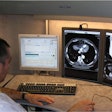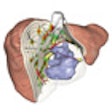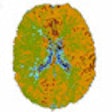
VIENNA - Abnormal reporting is common and is the principal cause of lawsuits against radiologists. As they search for the best way to protect themselves, radiologists have been left wondering what form their reports should take. Experts echoed these concerns in a dedicated, jam-packed session on Saturday at the European Congress of Radiology (ECR), addressing an issue that strikes at the very heart of their profession.
The radiological report goes right to the essence of being a radiologist. It demonstrates the radiologists' added value, embodies their duty of care to the patient, and defines their standard of care. For these reasons, careful attention should be paid to this vital task, according to a panel of experts.
"A report should be an epiphany; it should be something you pick up and get an immediate intuitive grasp of what the person is trying to say," said Dr. Leo Lawler of the Mater Misericordiae University Hospital in Dublin, Ireland. "And in my opinion ... if a clinician doesn't read a very well-constructed report [the radiologist] has failed in some way. But equally when he has decided that there's no longer a value to reading our reports, then somehow we have fallen short of the mark."
 Dr. Leo Lawler from Dublin. All images courtesy of the European Society of Radiology.
Dr. Leo Lawler from Dublin. All images courtesy of the European Society of Radiology.Writing an effective radiology report requires close attention be paid to the three major pillars of reporting: structure, content, and functionality, Lawler said.
The report structure should be dynamic and able to change over time, he said. Reports should also be portable.
"You should be able to take a report from one institution, or one part of the hospital, to another part and it should make equal sense there as it does where you are," he said.
Technological advances should be reflected in reports, Lawler continued. The ability to image both form and function of the body should prompt a rethink of the way reports are being written. However reality is quite different.
"We are now intervening in ways we have never done before. Our reports have to reflect that kind of complexity. ... Too often you read reports on procedures [in which] you realize [radiologists] have no idea about interventional procedures. They simply can't keep up; most of us can't," he said.
The report should be electronic and able to be embedded into other systems such as HIS and RIS, he said. It should also be effective by being very readable and universal.
"If you took it to a different continent [and] if it was deciphered, [the report] would make a lot of sense and the key words would have a universality about them," said Lawler, who trained in the U.S.
As for their content, reports should be very concise, clear, complete, consistent, and reproducible. They should also lack any ambiguity, he said.
Reports should demonstrate the radiologist's insight into clinical care, be accurate, and convey the message in a meaningful way, Lawler said.
"It must be decisive and, if properly worded, should elicit the appropriate response," he said.
Negligent reports often demonstrate good vision and descriptive techniques, but fail to go to the next step of forming an opinion, he said.
 Dr. Jane Adam from London.
Dr. Jane Adam from London."It is a report that tends to distance itself from a clinical issue, and it's a report that fails to prompt the appropriate action in a timely fashion," he said. "And the literature unfortunately is replete with medicolegal cases where this is the angle they get the radiologist on. That they failed to generate a report that incited, if you like, the appropriate action in a timely fashion."
The balance of the report has to be between brevity and completeness, uniformity and individualism, portability and data protection, advice and proscription, universality and priority.
The report should rather be brief, except in complex cases or in the case of significant findings. In a nutshell, it should be as long as necessary, but some cases, such as aneurysms, may require it to go beyond the basics. "Referrers want clarity and meaningfulness," he said.
Lawler encouraged authors to keep their own style, to use the universal scientific acronyms alone, and to avoid enumerations or word bites.
As for the choice between free text and structure, he was straightforward. "With modern software, we cannot have both," he said. Headlines are necessary, but it doesn't mean that everything should be structured. BI-RADS has served as a standard up to now.
Finally, he advised caution when writing recommendations. "When advising additional imaging, remember the example of the dog chasing the car. He may be running to get it, but what does he get once he gets there?" he said.
Clearly, debates on this hot topic are only starting.
Dr. Jane Adam, a consultant radiologist at St. Georges Hospital in London and session moderator, acknowledged the high number of participants. "I think we should continue this session next year, probably in a bigger room. We should also make it more interactive, for instance by equipping the room with keypads to let the public participate during the lectures. It is such an important topic," she said.
Originally published in ECR Today March 6, 2011.
Copyright © 2011 European Society of Radiology














